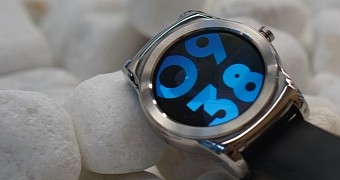Jolla is mostly known for its Sailfish OS for smartphones and tablets, but definitely not for smartwatches. The Finnish company had quite a short history in the smartphone business, but it didn't become popular enough to be able to launch more than a few devices.
However, the Jolla team is hard at work making its Sailfish OS as flexible as possible. After seeing the OS on the Jolla smartphone and tablet, Intex Aqua Fish and Turing Phone, the Finnish company is now considering bringing Sailfish OS to smartwatches.
The new OS would be called Sailfish Watch and would offer a different kind of experience, perfectly suited for small screens. Jolla has already started testing the new OS internally and ported the Sailfish Watch OS on an Android smartwatch.
According to Jolla, its Sailfish Watch draws inspiration from an existing smartwatch operating system called Asteroid OS, led by Florent Revest, which in turn shares many core Mer and Nemo libraries with Sailfish OS.
The Sailfish Watch offers a main view reserved for showing time “since a smartwatch is still a watch a fashion accessory, as well as a tech gadget.”
The Homescreen has been organized in the same fashion as the Sailfish OS, so those using Jolla's platform on their phones or tablets will feel right at home.
There's the standard Sailfish-style horizontal carousel with Events on the left, the main view on the center and fitness view promoted as the super app on the right.
There are many similarities between Sailfish OS and Sailfish Watch, including the fact that apps can always be accessed from the bottom of the screen, no matter where you are, and ambiances from the top.
Also, all major setting shortcuts have been included in the Events category. In the fitness view, users will be able to track their daily activity levels.
As soon as the watch is paired with a Sailfish smartphone, you will be able to take calls and receive messages from the smartwatch. However, the connectivity has been routed through Wi-Fi rather than Bluetooth since that would have required longer porting time.

 14 DAY TRIAL //
14 DAY TRIAL // 